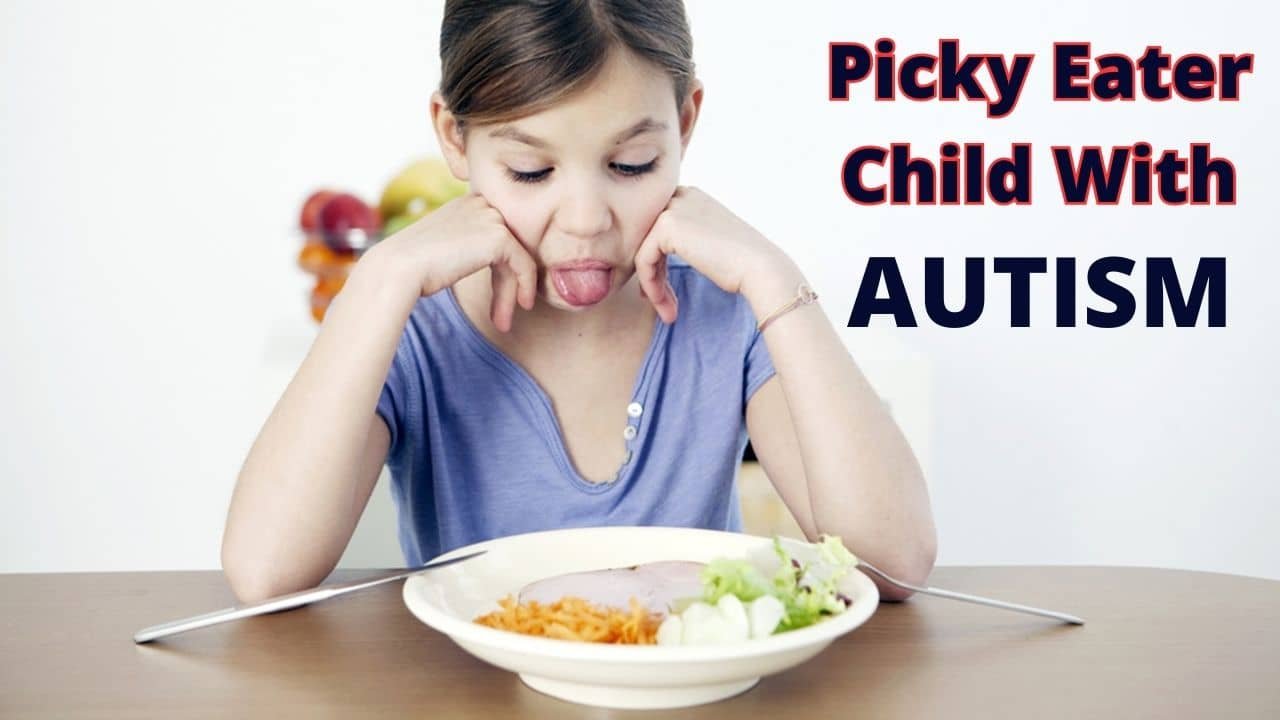Autism Spectrum Disorder (ASD) is a neurodevelopmental condition that affects communication, social interaction, and behavior. One common challenge faced by individuals with autism is picky eating. Picky eating refers to a limited food repertoire, sensitivity to textures, smells, and tastes, and resistance to trying new foods.
In this blog post, we will explore the relationship between autism and picky eating, provide insights into its underlying causes, and offer practical strategies to support individuals with autism in developing healthier eating habits.
It provides parents and caregivers with practical tips and information to ensure that children receive the necessary nutrients for their optimal growth and development. By making informed choices about nutrition, we can support children’s overall health and well-being.
1. Understanding Nutritional Needs:
- Overview of the essential nutrients children need for healthy growth, including proteins, carbohydrates, fats, vitamins, and minerals.
- Age-specific nutritional requirements and recommended daily intake for different age groups.

2. Building a Balanced Plate:
- Tips for creating a balanced meal with the right proportion of carbohydrates, proteins, and fats.
- Guidance on incorporating a variety of colorful fruits and vegetables into children’s meals.
- Suggestions for healthy alternatives to processed and sugary snacks.
3. Nutrient-Rich Foods:
- A list of nutrient-dense foods that are beneficial for children’s growth and development.
- Examples of good sources of proteins, such as lean meats, poultry, fish, eggs, legumes, and dairy products.
- Suggestions for healthy carbohydrate options, including whole grains, fruits, and vegetables.

4. Smart Snacking:
- Ideas for nutritious and convenient snacks that children can enjoy between meals.
- Tips for preparing homemade snacks and avoiding processed and sugary snacks.
- Portion control guidelines for snacks to maintain a balanced diet.
4.1. Hydration:
- Importance of proper hydration and the recommended daily fluid intake for children.
- Tips for encouraging children to drink water and limit sugary beverages.
- Creative ideas to make drinking water fun and appealing for children.
4.2. Meal Planning and Preparation:
- Practical strategies for meal planning, including involving children in the process.
- Time-saving tips for meal preparation and making nutritious meals on a budget.
- Suggestions for involving children in cooking and fostering their interest in healthy eating.

4.3. Addressing Picky Eating:
- Tips for dealing with picky eaters and encouraging them to try new foods.
- Strategies for making mealtimes enjoyable and creating a positive eating environment.
- Ideas for presenting food in an appealing way to increase the likelihood of acceptance.
5. The Link Between Autism and Picky Eating
5.1 Understanding Autism Spectrum Disorder (ASD)
- Definition of autism and its prevalence.
- Core characteristics of ASD and how they relate to eating behaviors.
- The sensory sensitivities commonly experienced by individuals with autism and their impact on food choices.
5.2 Picky Eating in Autism
- Defining picky eating and its prevalence among individuals with autism.
- The reasons behind picky eating behaviors in autism.
- How picky eating may be influenced by sensory processing issues, communication challenges, and rigidity in routines.

6: Addressing Picky Eating in Autism
6.1 Creating a Supportive Mealtime Environment
- Establishing a predictable routine to provide a sense of security.
- Setting up a quiet, low-stimulus eating area to minimize sensory overload.
- Incorporating visual schedules and social stories to enhance understanding.
6.2 Sensory Considerations
- Identifying specific sensory sensitivities and adapting the food environment accordingly.
- Gradually introducing new textures, flavors, and smells to expand the food repertoire.
- Offering alternative food presentation methods (e.g., purees, blending) for individuals with texture aversions.

6.3 Communication Strategies
- Enhancing communication skills to express food preferences and dislikes.
- Utilizing visual aids, such as picture cards or communication apps, to support food-related conversations.
- Encouraging individuals with autism to participate in meal planning and grocery shopping to foster a sense of ownership.
6.4 Incremental Exposure and Positive Reinforcement
- Implementing a step-by-step approach to gradually introduce new foods.
- Celebrating small victories and offering praise for trying new foods.
- Reinforcing positive behaviors with preferred rewards or incentives.
7: Additional Resources and Professional Support
7.1 Collaborating with Healthcare Providers
- Consulting with a healthcare professional, such as a pediatrician or nutritionist, for specialized guidance.
- Exploring potential underlying medical conditions contributing to picky eating.
7.2 Supportive Therapies and Interventions
- Occupational therapy to address sensory sensitivities and improve self-regulation.
- Applied Behavior Analysis (ABA) to target specific food-related behaviors and reinforce positive eating habits.
Speech therapy to improve communication skills, including requesting preferred foods and expressing dislikes.
8. Addressing Picky Eating: Encouraging Healthy Food Choices.
How to handle picky eating
We offers guidance and strategies for parents and caregivers dealing with picky eaters. It provides practical tips and approaches to help children develop a more varied and balanced diet, promoting their overall nutrition and well-being. By understanding the underlying reasons for picky eating and implementing effective techniques, we can encourage healthy food choices and create positive mealtime experiences.

8.1. Understanding Picky Eating:
- Explanation of common reasons for picky eating, such as sensory sensitivities, texture aversions, and fear of new foods.
- Awareness of developmental stages that may contribute to selective eating behaviors in children.

8.2. Creating a Positive Eating Environment:
- Tips for establishing a relaxed and pleasant atmosphere during mealtimes.
- Setting regular meal and snack times to establish routine and consistency.
- Avoiding pressure or power struggles around food.

8.3. Food Exposure and Variety:
- Gradual introduction of new foods to expand a child’s palate.
- Encouraging exposure to various textures, flavors, and colors through creative presentations and involvement in meal preparation.
- Incorporating familiar and preferred foods alongside new items to increase acceptance.
8.4. Making Meals Fun and Interactive:
- Engaging children in meal planning, grocery shopping, and food preparation.
- Incorporating themed meals, food art, or sensory exploration activities to make eating enjoyable.
- Using age-appropriate utensils, plates, and colorful presentations to attract children’s interest.
9. Role Modeling and Family Meals:
- Demonstrating healthy eating habits and adventurous food choices as parents and caregivers.
- Encouraging family meals where everyone eats the same foods together.
- Engaging in positive conversations about food and sharing positive experiences related to trying new foods.

10. Gradual Exposure and Food Rewards:
- Gradually introducing new foods, starting with small portions and building up over time.
- Using positive reinforcement and verbal praise to acknowledge and celebrate small steps toward trying new foods.
- Being mindful of not relying solely on food rewards, but rather incorporating non-food rewards and praise.
11. Seeking Professional Support:
- Recognizing when picky eating becomes a significant concern or affects a child’s health and growth.
- Considering consultation with healthcare professionals, such as paediatricians, nutritionists, or feeding therapists, for specialized guidance and support.
Conclusion
This Healthy Nutrition Guide for Growing Children equips parents and caregivers with valuable knowledge and practical tips to provide balanced and nutritious meals for children. By incorporating these recommendations into daily routines, we can help children develop healthy eating habits that will contribute to their overall well-being. Remember, each child is unique, and it’s essential to consider individual preferences and dietary needs. Let’s make healthy nutrition an enjoyable and rewarding part of our children’s lives.



